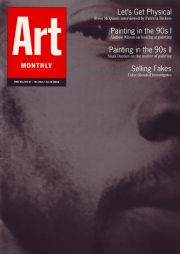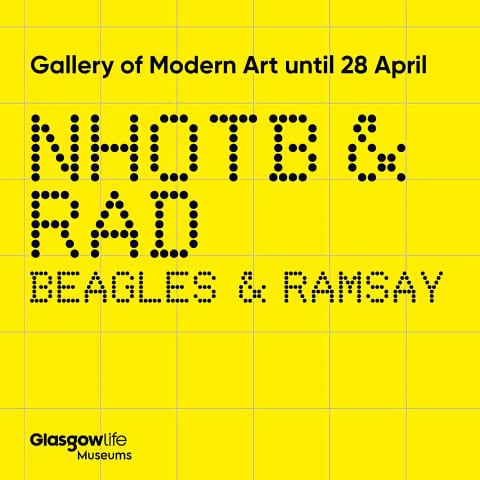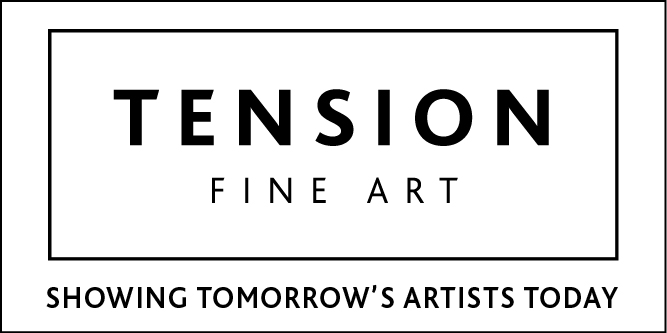Feature
Loaded
Mark Durden discusses the matter of painting
Robert Ryman’s paintings, with their emphasis on procedure and process, on painting as a mechanical and systematic activity, seem central to the characteristics of a lot of abstract painting today.
Yve-Alain Bois has written of Ryman’s deconstruction of modernist painting: ‘By his dissection of the gesture, or the pictorial raw material, his (nonstylistic) analysis of the stroke, Ryman produces a kind of dissolution of the relationship between the trace and its organic referent’. As a result, Ryman’s paintings are seen to move ‘closer and closer to the condition of the photograph or the readymade, yet remain at the threshold of simple negation’.
Ryman, thus, helps to clarify ‘Loaded’, a show of new work by Terry Shave together with paintings by artists selected and curated by him. The paintings on show are all characterised by a critical self-reflexivity, adopting an experimental and inventive approach to the practice of painting, testing its limits and redefining its status and identity in the process.
In ‘Loaded’, Mark Hammond’s paintings take on a photographic effect: buckled DIY steel shelving, displayed at head height and attached to walls by magnets, bear the trace of large swirling brushmarks across their surfaces. With the matte surface of these paintings being bereft of facture, the energy and emotionalism of the gestural mark is reduced and the resultant photographic effect tends to freeze the trace – index becomes icon. With the steel surface physically damaged, bent and undulated, it’s almost as if the energy of the gesture is displaced from the picture to its support.
If Hammond’s paintings depersonalise the gesture by denying facture, Alexis Harding returns us to the physical matter of paint. His technique is to pour lines of paint through a trough onto a panel of wet paint. He deliberately mixes incompatible paints in the process, and the surfaces react to form a wrinkled and puckered skin. The poured lines form a grid which is pulled and distorted as the paints react with one another in the drying process. His concern is with the mutability of paint, what he calls ‘grunge abstraction’. Paint here is not an index of the body of the artist but an index of effects to do with its intrinsic property as material, the wrinkling as incompatible paints are combined, the sagging and dripping which results from the physical weight of paint, literally hanging off the edges of some of the panels.
Louise Hopkins and David Martin introduce figurative elements into the show, but their concerns remain very much with the materiality and intrinsic qualities of paint. Hopkins reverses and stretches a commercial floral fabric, which is then layered with translucent gesso. The pattern is then meticulously painted with small brushes. Painted in sepia tones, and with some areas remaining unfinished, these flower pictures remain blighted; there’s a distinct melancholy to this act of restoration. Out of a Rorschach of mixed clusters of paint – literally thrown at the surface of the canvas – Martin forms images, women’s faces in one, pictorial allusions to Turner and Van Gogh, in others.
Terry Shave has spoken of painting as a ‘pluralistic activity’. His paintings set up a dynamic relationship between different surfaces, triptych panels which combine photography with varied permutations of markings: paint as stain, smear, drip or pour. In some works the paint appears somewhat incidental, as a soiling or dirtying mark. This is particularly so in the right hand panels of the triptychs which makes up the ‘What If?’ series. Their seeming insignificance is, however, belied by their presentation preserved under a film of lacquer. The highly polished surface effects a play of reflections, a surface set in relation to centre panels showing a synthetic photographic colour image of ambiguous liquid: globules or bubbles. What is interesting in his painting is the way it focuses upon the seemingly insignificant mark, anatomises painting, breaks it down, so to speak, by turning and returning to qualities of variously painted and treated surfaces. It’s a painting in slow motion, epitomised in the slow movement of one liquid over another, fixed in the central photographic images of the Drawing Veils triptych.
Richard Wright conceived his painting in relation to Shave’s paintings on display in the main gallery. His painting approaches the condition of the logo or sign, existing as subtle intrusion into the architecture of the space. Painted directly onto the gallery wall, his series of repeated ambiguous red shapes each flag the upper corners of the room.
Victoria Morton’s small paintings, the most traditional on show, imply speed, quick gestures, hoops (of colour or incidental marks on canvas, a seeming lightness and instantaneity which hides the labour and the time-consuming process of their making. Cathy Wilkes confronts us with paint as plastic and physical material: a sheet of black acrylic paint adhered direct to the gallery wall or paint repeatedly pushed through a wire mesh until a phallic form is created. Her works might be seen to take their cue from Bernard Frize, whose painting have involved covering canvases with dried skeins paint. Only Wilkes’s works are more raw and unrefined, there are no stretchers and canvas to secure their identity as paintings. Hers remain the direct investigation of the properties of paint in the show – paint as pure matter.
Loaded is at the Ikon Gallery, Birmingham until January 19 1997
Mark Durden lectures in the History of Art and Design at Staffordshire University.
First published in Art Monthly 202: Dec-Jan 96-97.










